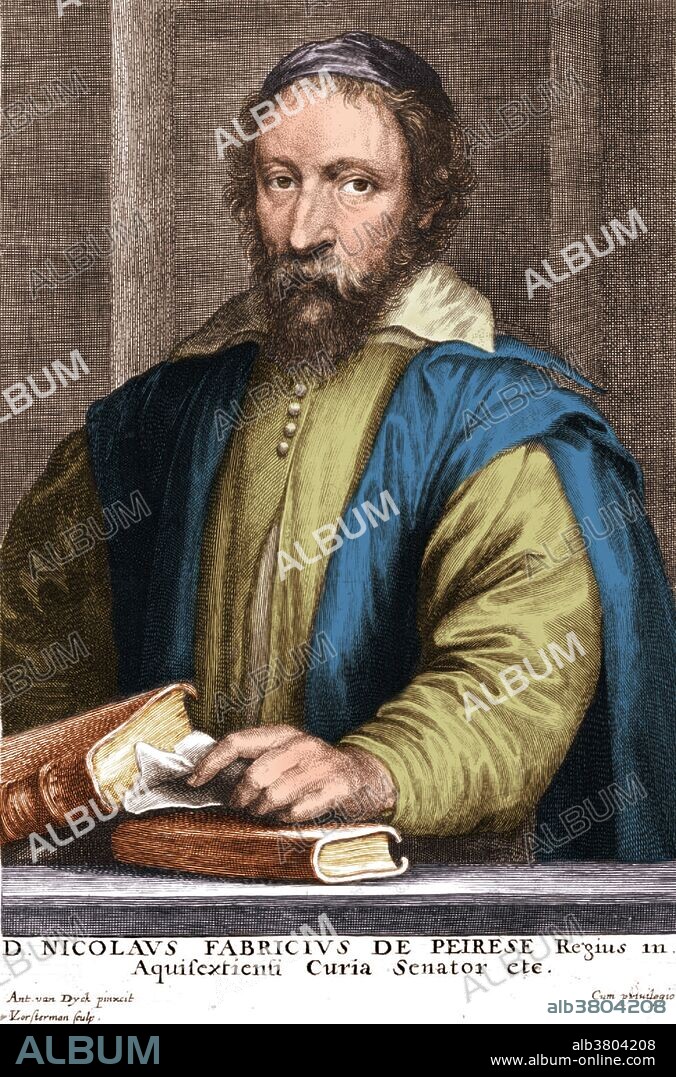alb3804208
Peirescius, French Polymath

|
Ajouter à une autre Lightbox |
|
Ajouter à une autre Lightbox |



Avez-vous déjà un compte? S'identifier
Vous n'avez pas de compte ? S'inscrire
Acheter cette image.
Sélectionnez l'usage:

Titre:
Peirescius, French Polymath
Légende:
Voir la traduction automatique
Nicolas-Claude Fabri de Peiresc (December 1, 1580 - June 24, 1637) was a French astronomer and antiquary, who maintained a wide correspondence with scientists, and was a successful organizer of scientific inquiry. The first discovery of the diffuse nebulous nature of the Orion Nebula is generally credited to him when he made a record of observing it on November 26, 1610. He became a patron of science and art, studied fossils, and supported the astronomer Pierre Gassendi from 1634 to 1637. He was also a noted politician in his home region, and a tireless letter writer (10,000 of his letters survive). He wrote letters to Galileo, Gassendi and Tommaso Campanella, whom he defended when they were arrested by the Inquisition, the brothers Dupuy, and de Richelieu, to name a few. He is remembered for his research in the determination of the difference in longitude of various locations in Europe, around the Mediterranean, and in North Africa. He owned over 18,000 coins and medals, and was also an archeologist, amateur artist, historian, Egyptologist, botanist, zoologist, physiologist, geographer, and ecologist. He died in 1637 at the age of 56.
Crédit:
Album / Science Source
Autorisations:
Modèle: Non - Propriété: Non
Questions sur les droits?
Questions sur les droits?
Taille de l'image:
3300 x 4996 px | 47.2 MB
Taille d'impression:
27.9 x 42.3 cm | 11.0 x 16.7 in (300 dpi)
Mots clés:
CÉLÈBRE • CELEBRITE • EUROPÉEN • HISTOREIN • HISTORIEN • HOMME DE SCIENCE • HOMME • PERSONNAGES • PERSONNALITÉS • PERSONNE • SAVANT • SCIENTIFIQUE • ZOOLOGISTE
 Pinterest
Pinterest Twitter
Twitter Facebook
Facebook Copier le lien
Copier le lien Email
Email
